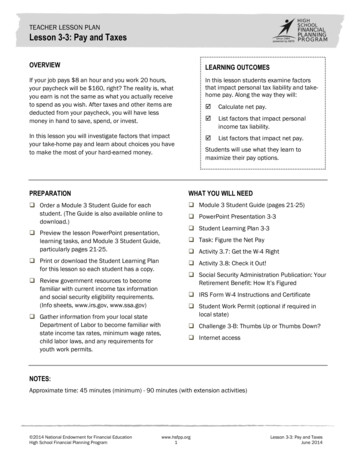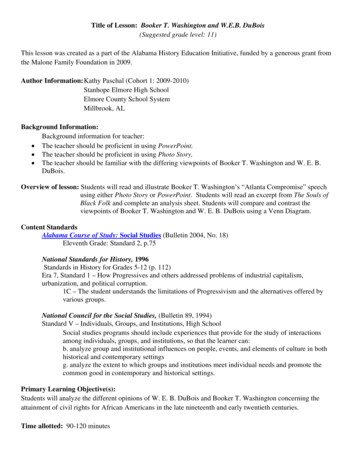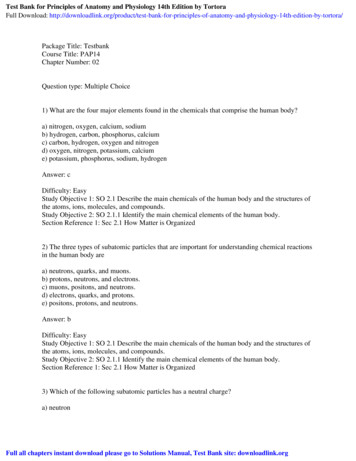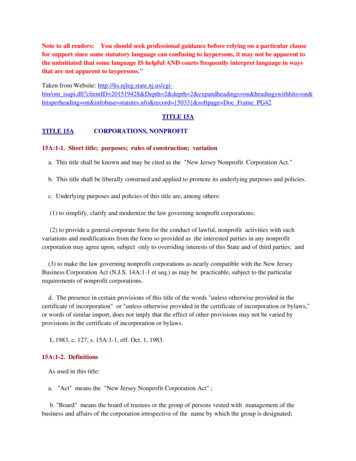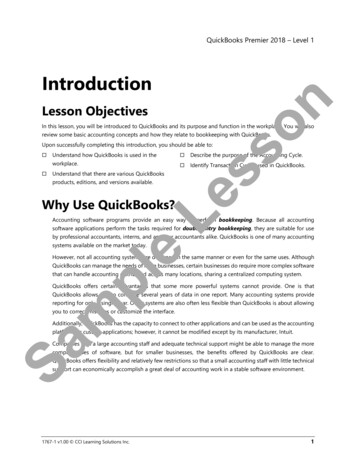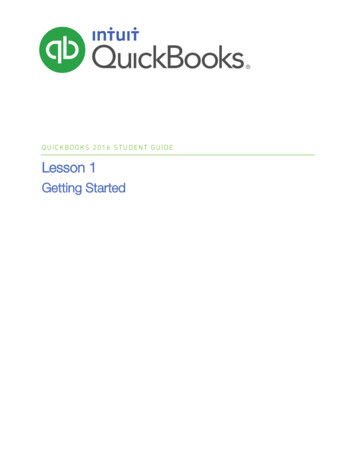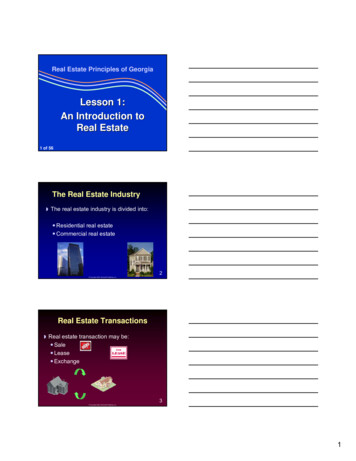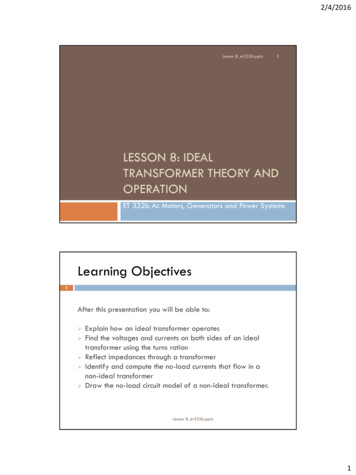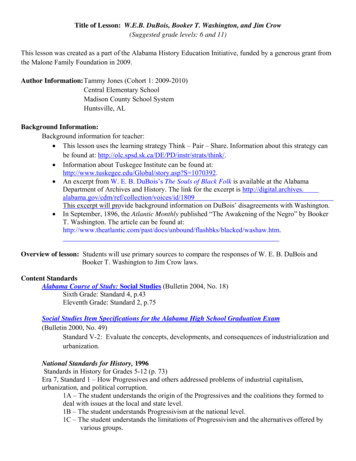
Transcription
Title of Lesson: W.E.B. DuBois, Booker T. Washington, and Jim Crow(Suggested grade levels: 6 and 11)This lesson was created as a part of the Alabama History Education Initiative, funded by a generous grant fromthe Malone Family Foundation in 2009.Author Information: Tammy Jones (Cohort 1: 2009-2010)Central Elementary SchoolMadison County School SystemHuntsville, ALBackground Information:Background information for teacher: This lesson uses the learning strategy Think – Pair – Share. Information about this strategy canbe found at: http://olc.spsd.sk.ca/DE/PD/instr/strats/think/. Information about Tuskegee Institute can be found at:http://www.tuskegee.edu/Global/story.asp?S 1070392. An excerpt from W. E. B. DuBois’s The Souls of Black Folk is available at the AlabamaDepartment of Archives and History. The link for the excerpt is tion/voices/id/1809This excerpt will provide background information on DuBois’ disagreements with Washington. In September, 1896, the Atlantic Monthly published “The Awakening of the Negro” by BookerT. Washington. The article can be found ashbks/blacked/washaw.htm.Overview of lesson: Students will use primary sources to compare the responses of W. E. B. DuBois andBooker T. Washington to Jim Crow laws.Content StandardsAlabama Course of Study: Social Studies (Bulletin 2004, No. 18)Sixth Grade: Standard 4, p.43Eleventh Grade: Standard 2, p.75Social Studies Item Specifications for the Alabama High School Graduation Exam(Bulletin 2000, No. 49)Standard V-2: Evaluate the concepts, developments, and consequences of industrialization andurbanization.National Standards for History, 1996Standards in History for Grades 5-12 (p. 73)Era 7, Standard 1 – How Progressives and others addressed problems of industrial capitalism,urbanization, and political corruption.1A – The student understands the origin of the Progressives and the coalitions they formed todeal with issues at the local and state level.1B – The student understands Progressivism at the national level.1C – The student understands the limitations of Progressivism and the alternatives offered byvarious groups.
National Council for the Social Studies, (Bulletin 89, 1994)Standard V – Individuals, Groups, and Institutions, High SchoolSocial studies programs should include experiences that provide for the study of interactionsamong individuals, groups, and institutions, so that the learner can:h. explain and apply ideas and modes of inquiry drawn from behavioral science and social theoryin the examination of persistent issues and social problems.Primary Learning Objective(s): Examine the evolution of Jim Crow laws. Compare and contrast the responses of W. E. B. DuBois and Booker T. Washington to Jim Crowinequality.Time allotted: 50 minutesMaterials and Equipment: Copies of the poem “Booker T. and W. E. B.” by Dudley Randall (attached) Copies of Compare/Contrast Matrix (The students may draw this matrix on their own paper.) Copies of photographs and Photo Analysis Worksheets for group work “Booker T. Washington and W. E. B. DuBois: Two Paths to Ending Jim Crow” PowerPointTechnological Resources: Computer with internet access LCD projector PowerPoint (v. ’97-2003) – If you have a newer version, a viewer (free) may be downloaded from theinternet.Background/Preparation: The students should be familiar with the 13th, 14th, and 15th Amendments to the United t/Motivation Activity:The teacher will ask students to imagine laws such as the following:o All blacks shall be required to own real property in order to qualify to vote. (New York)o Black children shall be prohibited from attending Pittsburgh schools.o No person or corporation shall require any white female nurse to nurse in wards or rooms inhospitals, either public or private, in which Negro men are placed. (Alabama)o It shall be unlawful for a Negro and white person to play together or in company with each otherat any game of pool or billiards. (Alabama)o No colored barber shall serve as a barber [to] white women or girls. (Georgia)o The officer in charge shall not bury, or allow to be buried, any colored persons upon ground setapart or used for the burial of white persons. (Georgia)After students react to these laws, the teacher will explain that laws such as these existed in the UnitedStates and became known as “Jim Crow” laws.
Step 1Step 2Step 3Step 4Step 5Step 6Show slides 1-7 on “Booker T. Washington and W.E.B. DuBois: Two Paths toEnding Jim Crow” PowerPoint.Ask students the following questions: “What is the purpose of a trade school education?” “What is the purpose of a traditional four-year college education?” “Is either type of post-high school education more valid than the other?”Allow time for student discussion.Divide the class into four groups. Pass out a picture to each group along with thePhoto Analysis Worksheet from the National Archives. Give the groups time toanalyze the pictures by answering the questions on the worksheet. After thegroups have analyzed the photographs, allow a spokesman from each group toshare answers to the questions while the teacher shows the appropriate picture onthe PowerPoint (slides 8-11).Show the remaining PowerPoint slides about W. E. B. DuBois and Booker T.Washington. During the PowerPoint, students will use the Compare/ContrastMatrix to draw their own conclusions about the viewpoints of Washington andDuBois. After the PowerPoint, allow students to share their conclusions.Pass out the poem, “Booker T. and W. E. B.” to students. Allow individualstime to silently read the poem. Ask for volunteers to read the poem out loud tothe class. Then ask the students, “How does the poem illustrate the differencesbetween Washington and DuBois?”Remind students of the information given on the PowerPoint concerning thebackgrounds of Washington and Dubois. Ask the students, “How did thebackgrounds of each influence their points of view?” Students will Think-PairShare. Teacher will call on partners to share their thoughts.Assessment Strategies:Grade the Compare/Contrast Matrix for accuracy. Delete choices on matrix for high school classes.Suggested essay topic for unit test: Compare and contrast the views of Booker T. Washington and W. E. B. DuBois on the following:o Education for African Americanso Civil rightso Political powerExtension: Compare the views of Booker T. Washington and W. E. B. DuBois to those of Dr. Martin Luther King,Jr. and Malcolm X.Remediation: Students needing reinforcement may watch the videos found athttp://www.youtube.com/watch?v Hsd55AK53U andhttp://www.youtube.com/watch?v WfsY2y7xrXo&feature related. If the school blocks YouTube, thesevideos can be downloaded to a flash drive.Accommodation: Give students a hard copy of the PowerPoint.
Modification: Review Individualized Education Plans, 504 Plans, and Gifted or ELL Plans for instructional andassessment accommodations or modifications. Provide multiple opportunities for students to demonstrate comprehension and mastery of appropriatelearning objectives.
Smith-Hughes Class in CarpentryFrom the Collections of the Alabama Department of Archives and History:http://216.226.178.196/cdm4/item viewer.php?CISOROOT /photo&CISOPTR 4419&CISOBOX 1&REC 3
"Smith-Hughes (senior) class in 'Agricultural Education,’ in their school garden for teacher training" atTuskegee Institute in Tuskegee, Alabama.From the collection of the Alabama Department of Archives and History:http://216.226.178.196/cdm4/item viewer.php?CISOROOT /photo&CISOPTR 3386&CISOBOX 1&REC 11
Howard University library, about 1890(Courtesy of Moorland-Spingarn Research Center, Howard University ry/3-organized/images/hulibrary.jpg
Pharmaceutical laboratory, Howard University, Washington, DC, ca. 1900.REPRODUCTION No.: LC-USZ62-35750 (b&w film copy paris.jpg
Student nameCompare/Contrast MatrixAs you view the PowerPoint, circle the response which best represents the view of each man.ViewsEducationCivil RightsPolitical PowerBooker T. WashingtonW. E. B. DuBoisIndustrialIndustrialClassicalClassicalMust be demandedMust be demandedMust be earnedMust be earnedResults from struggle and selfimprovementResults from struggle and selfimprovementMust be seizedMust be seized
Booker T. and W. E. B.Booker T. Washington and W. E. B. DuBoisBy Dudley Randall"It seems to me," said Booker T.,"It shows a mighty lot of cheekTo study chemistry and GreekWhen Mister Charlie needs a handTo hoe the cotton on his land,And when Miss Ann looks for a cook,Why stick your nose inside a book?""I don't agree," said W.E.B."If I should have the drive to seekKnowledge of chemistry or Greek,I'll do it. Charles and Miss can lookAnother place for hand or cook,Some men rejoice in skill of hand,And some in cultivating land,But there are others who maintainThe right to cultivate the brain.""It seems to me," said Booker T.,"That all you folks have missed the boatWho shout about the right to vote,And spend vain days and sleepless nightsIn uproar over civil rights.Just keep your mouths shut, do not grouse,But work, and save, and buy a house.""I don't agree," said W.E.B."For what can property availIf dignity and justice fail?Unless you help to make the laws,They'll steal your house with trumped-up clause.A rope's as tight, a fire as hot,No matter how much cash you've got.Speak soft, and try your little plan,But as for me, I'll be a man.""It seems to me," said Booker T.-"I don't agree,"Said .html?id 177161
This lesson was created as a part of the Alabama History Education Initiative, funded by a generous grant from . 1B – The student understands Progressivism at the national level. 1C – The student understands the limitations of Progressivism and the alternatives offered by . Review Individualized Education


